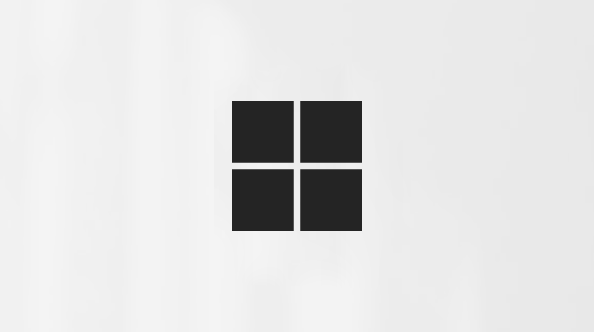November 11, 2025—KB5068787 (OS Build 20348.4405)
Applies To
Release Date:
11/11/2025
Version:
OS Build 20348.4405
This cumulative update for Windows Server 2022 (KB5068787), includes the latest security fixes and improvements, along with non-security updates from last month’s optional preview release. To learn more about differences between security updates, optional non-security preview updates, out-of-band (OOB) updates, and continuous innovation, see Windows monthly updates explained. For information on Windows update terminology, see the different types of Windows software updates.
To view the latest updates about this release, visit the Windows release health dashboard or the update history page for Windows Server 2022.
Announcements and messages
This section provides key notifications related to this release, including announcements, change logs, and end-of-support notices.
Windows Secure Boot certificate expiration
Important: Secure Boot certificates used by most Windows devices are set to expire starting in June 2026. This might affect the ability of certain personal and business devices to boot securely if not updated in time. To avoid disruption, we recommend reviewing the guidance and taking action to update certificates in advance. For details and preparation steps, see Windows Secure Boot certificate expiration and CA updates.
Improvements
This security update contains fixes and quality improvements from KB5066782 (released October 14, 2025) and KB5070884 (released October 23, 2025). The following summary outlines key issues addressed by this update. Also, included are available new features. The bold text within the brackets indicates the item or area of the change.
-
[Security] Fixed: This update addresses an issue that affects Windows Server domain controllers using Microsoft Defender for Endpoint. After domain controller promotion, changes to registry permissions disrupted cloud-based communication.
-
[Networking] Fixed: This update fixes an issue in the HTTP.sys request parser, a Windows component that reads and processes HTTP requests. The parser allowed a single line break within HTTP/1.1 chunk extensions, where the RFC 9112 standard requires a carriage return and line feed (CRLF) sequence to terminate each chunk. This can cause a parsing discrepancy when front end proxies are a part of the setup. To turn on strict parsing, use the following registry key:
Registry Key: [HKEY_LOCAL_MACHINE\SYSTEM\CurrentControlSet\Services\Http\Parameters]
Registry value: "HttpAllowLenientChunkExtParsing"=dword:00000000
Data to be set: 0
If you've already installed previous updates, your device will download and install only the new updates included in this package.
For more information about security vulnerabilities, please refer to the Security Update Guide and the November 2025 Security Updates.
Windows Server 2022 servicing stack update (KB5068786) - 20348.4400
This update makes quality improvements to the servicing stack, which is the component that installs Windows updates. Servicing stack updates (SSU) ensure that you have a robust and reliable servicing stack so that your devices can receive and install Microsoft updates. To learn more about SSUs, see Simplifying on-premises deployment of servicing stack updates.
Known issues in this update
After installing KB5070884 or later updates, Windows Server Update Services (WSUS) does not display synchronization error details within its error reporting. This functionality is temporarily removed to address the Remote Code Execution Vulnerability, CVE-2025-59287.
How to get this update
Before you install this update
Microsoft now combines the latest servicing stack update (SSU) for your operating system with the latest cumulative update (LCU). For general information about SSUs, see Servicing stack updates and Servicing Stack Updates (SSU): Frequently Asked Questions.
Prerequisite for offline OS image servicing:
Make sure that your image includes KB5030216 (09/12/2023) or a later LCU. If not, install it on your offline media before you install the latest update. This LCU updates the SSU version to 20348.1960. That is the minimum SSU version you must have to prevent error 0x800f0823 (CBS_E_NEW_SERVICING_STACK_REQUIRED).
Install this update
To install this update, use one of the following Windows and Microsoft release channels.
|
Available |
Next Step |
|
|
This update downloads and installs automatically from Windows Update and Microsoft Update. |
|
Available |
Next Step |
|
|
This update downloads and installs automatically from Windows Update for Business in accordance with configured policies. |
|
Available |
Next Step |
|
Yes 1 |
To get the standalone package for this update, go to the Microsoft Update Catalog website. |
1 This latest cumulative update includes updates for AI components. Even though the AI component updates are included in the update, the AI components are only applicable to Windows Copilot+ PCs and will not install on Windows PC or Windows Server.
|
Available |
Next Step |
|
|
This update automatically syncs with Windows Server Update Services (WSUS) if you configure Products and Classifications as follows: Product: Microsoft Server operating system-21H2 Classification: Security Updates |
If you want to remove the LCU
To remove the LCU after installing the combined SSU and LCU package, use the DISM/Remove-Package command line option with the LCU package name as the argument. You can find the package name by using this command: DISM /online /get-packages.
Running Windows Update Standalone Installer (wusa.exe) with the /uninstall switch on the combined package will not work because the combined package contains the SSU. You cannot remove the SSU from the system after installation.
File Information
For a list of the files provided in this update, download the file information for cumulative update 5068787.
For a list of the files provided in the servicing stack update, download the file information for the SSU (KB5068786) - version 20348.4400.











